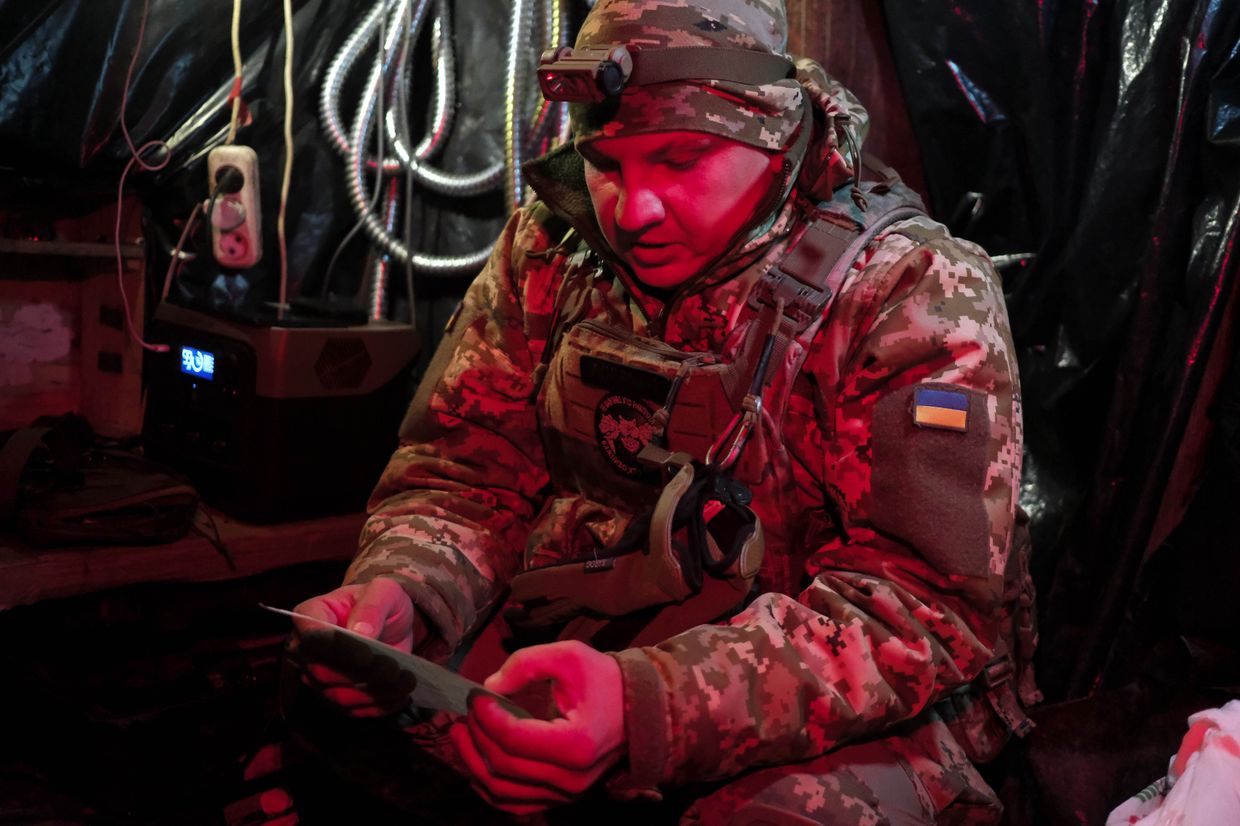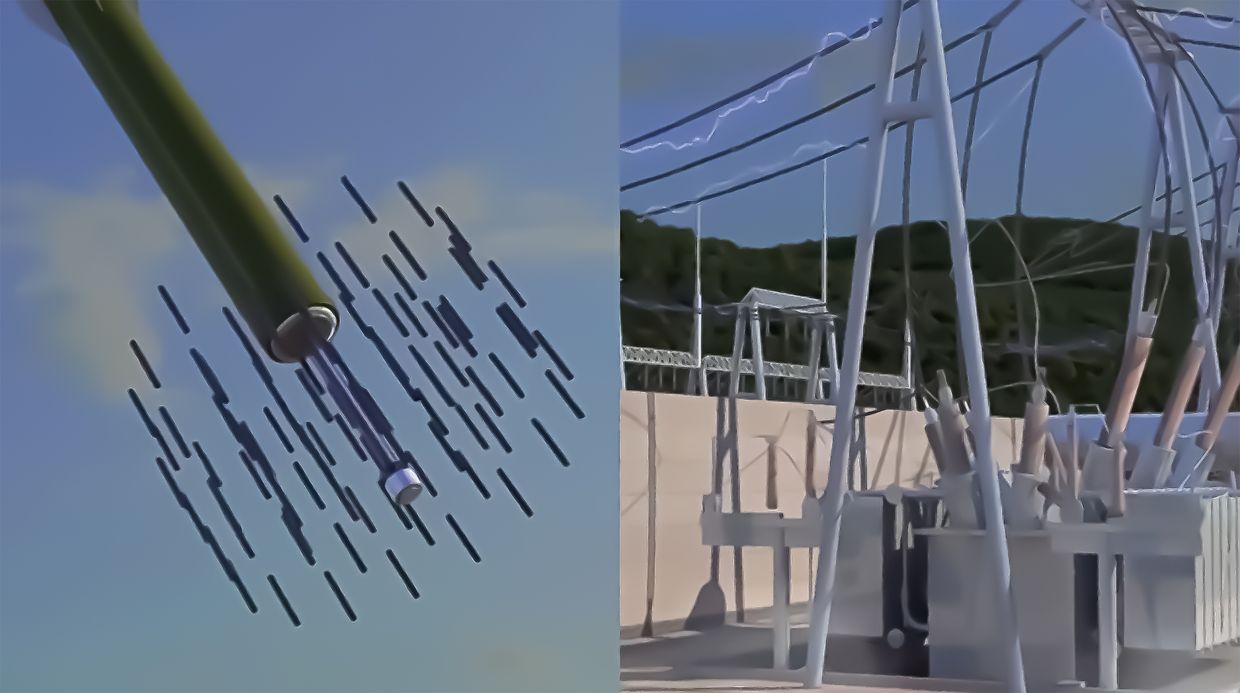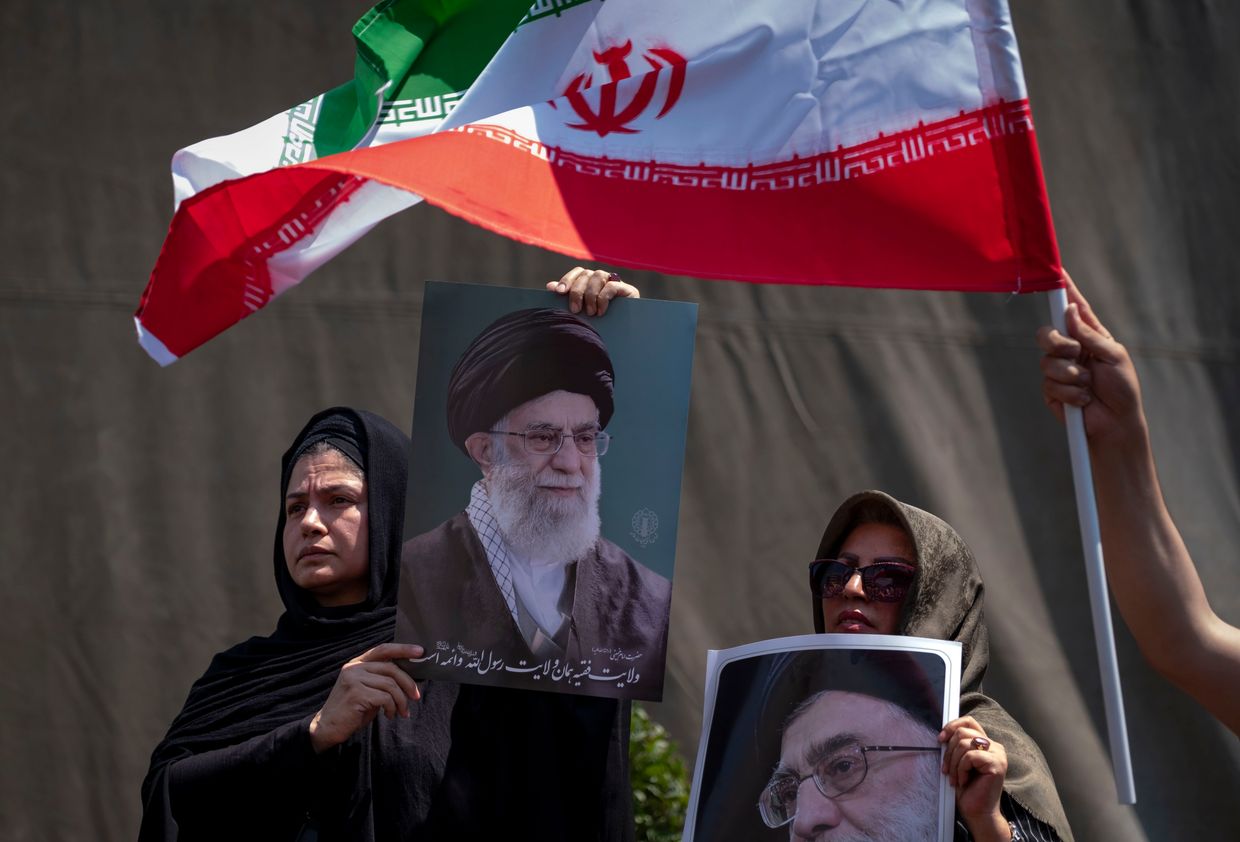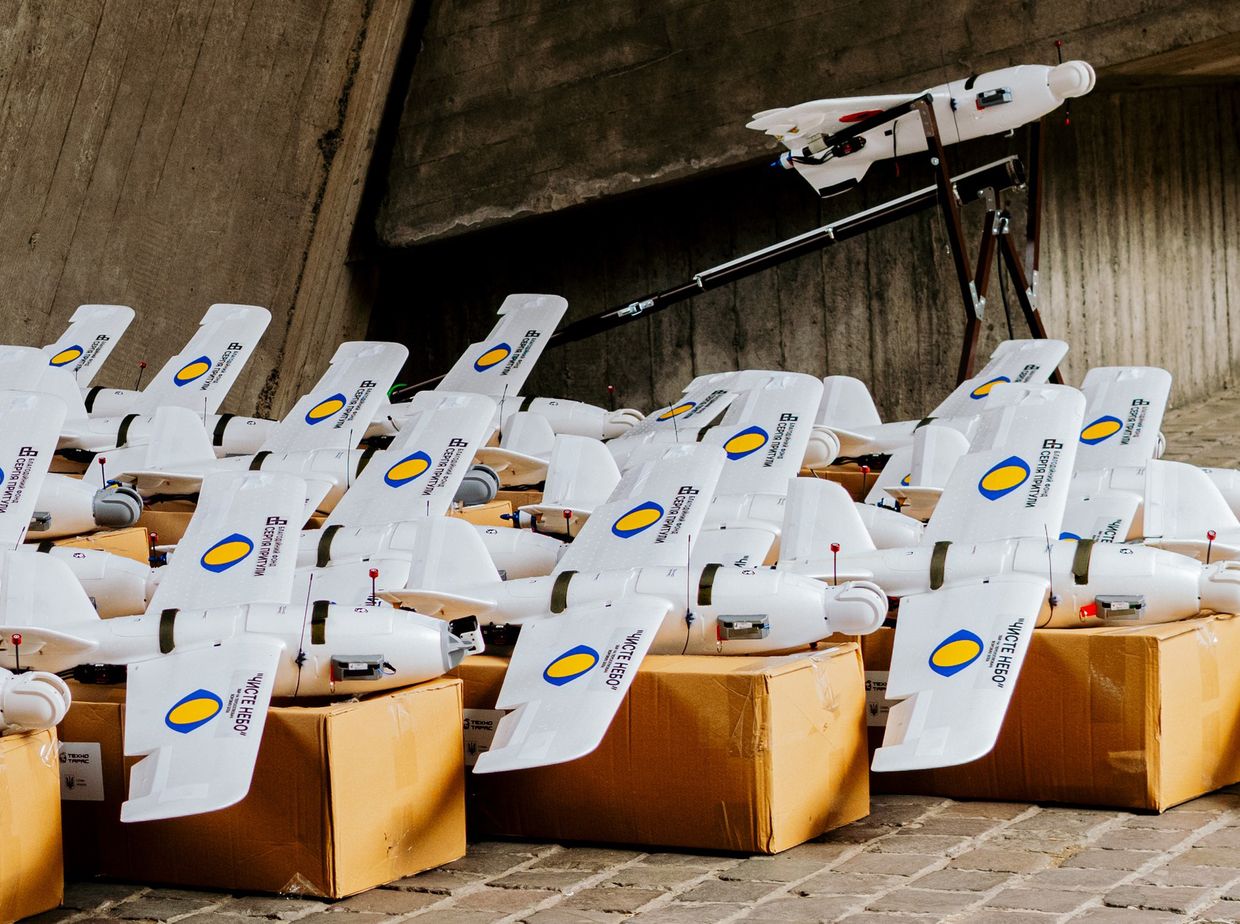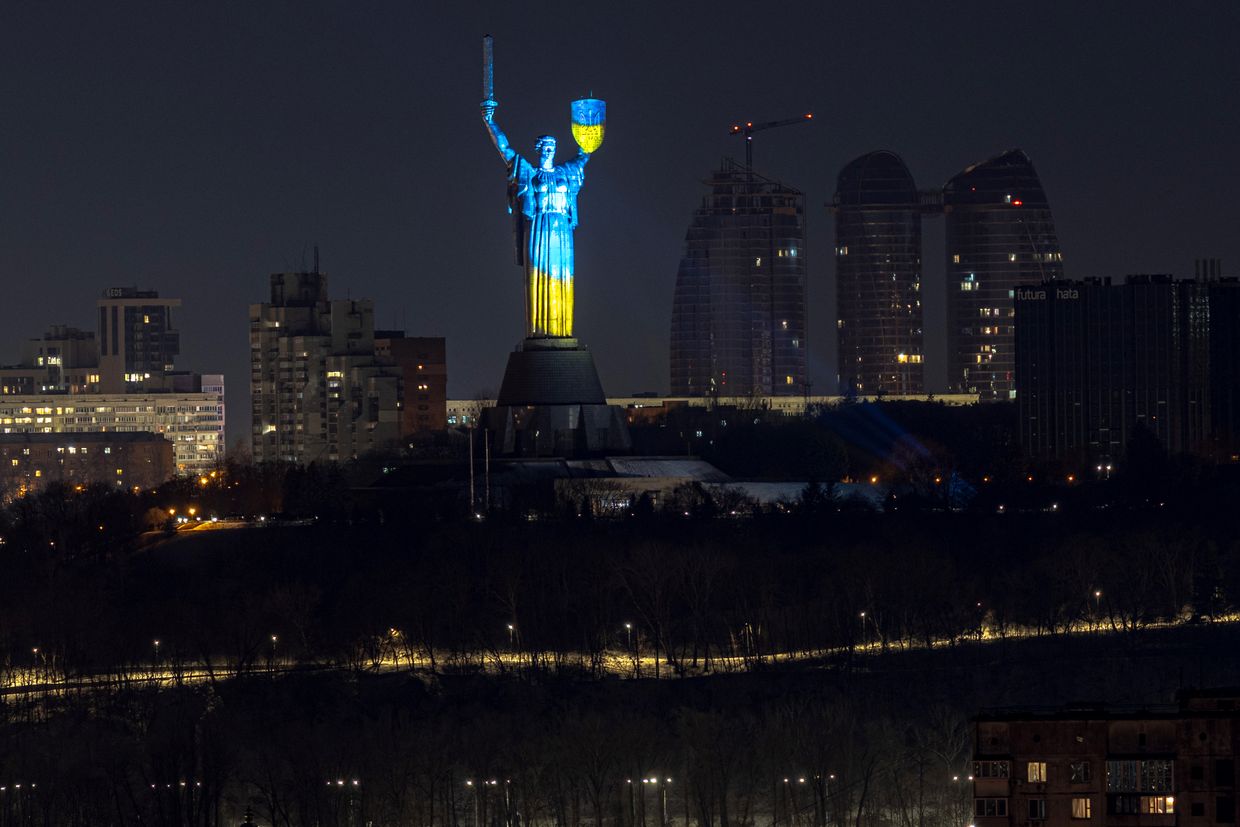“I’ll let you in on a secret, there will be an assault at dawn tomorrow."
Sviatoslav, a 57-year-old sergeant responsible for the mental support of the mortar unit, lowered his voice as he said the words.
“Get some sleep, as you can be sure there will be some work in the morning.”
On the other side of the room sits a younger, stocky man, rugged up in a winter coat and concentrating on his phone. Thirty-two-year-old Viktor “Wind” is going to lead the mortar team for his first time on tomorrow’s shift.
“This is his debut,” said Sviatoslav.
“He already knows how to dial in on targets, how to use Kropyva (Ukrainian tactical artillery program), and this is the first time he will lead the team, and then we will send him home for a well-earned vacation.”
Viktor and the others on shift soon leave the room to get some rest before the early start. Sleep before a mission is often as uneasy as it is valuable.
The unit, stationed in a village about 20 kilometers from the front line, is part of Ukraine’s 42nd Mechanized Brigade, fighting on the southern flank of Bakhmut in Donetsk Oblast, near the destroyed hamlet of Andriivka.
Ukrainian forces retook the ruins of the village in September, but could not push further into Russian-held territory. Consistently one of the hottest parts of the entire front line, the Andriivka sector has showcased the kind of slow but brutal positional fighting that has defined the war in Ukraine over 2023. The Kyiv Independent embedded with the unit for a 12-hour shift, but the other men usually fight here for five days at a time.

At 3:30 a.m., by the light of red flashlights, the men load ammunition, food, and other supplies into two cars slated to head out to the positions.
Trips back and forth from the front-line positions are always made “in the grey:” that is, at dawn or dusk, when there is just enough light for the driver to see the road but not enough for enemy drones to notice the movement.
The inside of the car is quiet for most of the way, with the driver’s eyes fixed on the couple of meters of road directly ahead. He must find the perfect balance of speed: too fast and he could easily run into one of the many shellholes or destroyed pieces of equipment along the way. Too slow, and the sun could rise and expose the car to drones; or worse, the team could arrive late for the morning assault.
As the vehicle approaches the positions, a bright white light illuminates the fields over the front lines. A Ukrainian signal flare has been fired in preparation for the assault. There will certainly be work to do.
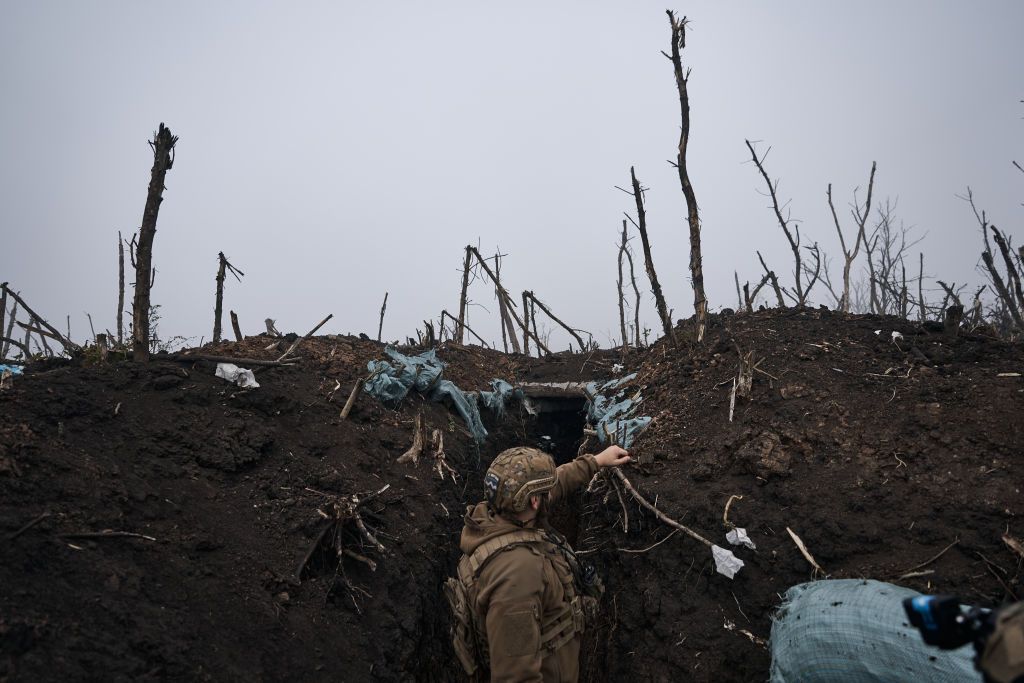
Morning shift
“When we stop, jump straight down into the ravine on the right and take cover,” Viktor said.
The changeover all happens in a blur. The sun hasn’t broken the horizon yet, but the men quickly unload the cars and shuffle into the dugouts; for them, it’s muscle memory at this point.
Within a few minutes, Viktor has set himself up in a cozy dugout alongside his second-in-command, 38-year-old Kyrylo from Volyn Oblast.
Viktor’s work tools are simple. Available targets are displayed on the tablet with Kropyva program, mortar settings for each target are recorded by hand on a notebook, while orders come in by voice message on WhatsApp.
These positions host two 120mm mortars, the largest caliber fielded by Ukraine, which can fire both Soviet and Western standard mortar rounds.
In this modern-day trench war, with positions mapped out by both sides and separated by a few hundred meters of blown-out fields, relative safety or danger is usually a direct function of distance from the enemy.
Set up around 4-5 kilometers from the Russian zero line, the positions are just out of range not only of enemy mortars, but also of most FPV (first-person-view) drones, making them already a lot safer than the positions of shorter-range mortars or infantry.
The first rays of winter sun just begin to come over the horizon as the first fire mission is ordered. Receiving the targets from the base in the rear, Viktor passes the coordinates to Dmytro, a young mortarman from Kyiv Oblast.
Less physically capable than the others, two older mobilized soldiers known as the “grandfathers” are in charge of preparing the rounds with the right charges for the target, after which they are handed to Dmytro, who has dialed in the weapon in the meantime.
In the space of seconds, the round is lowered down the tube and fired with a quick tug of rope as those standing around protect their ears from the blast. Straight after firing, the process is repeated like clockwork until the given number of rounds is sent to the enemy.
Despite the proliferation of drones and Starlink satellite internet, Viktor’s mortar team doesn’t have a tablet with the drone stream, instead simply firing at pre-determined target points, which could be anything from enemy trenches, machine gun nests, or evacuation points for wounded soldiers.
“Sometimes they tell us when we get a nice hit, maybe land in a trench or something, at least a couple of killed or wounded,” he said.

The 42nd is one of the lesser-known of Ukrainian brigades, but in many ways, represents the type of unit that now forms the bulk of the country’s army.
Formed in April 2023 as part of an ongoing effort to expand the military, the brigade is made up almost solely of mobilized soldiers, mostly from regions in western Ukraine.
With a handful of commanders and sergeants transferred from Ukraine’s veteran 10th Mountain Assault Brigade, the 42nd was first deployed to the brutal fighting in the Serebrianskyi Forest on the border of Luhansk Oblast, just outside the occupied city of Kreminna.
Coming in with no combat experience, the mortar unit underwent a baptism of fire in the forest, twice being caught in the middle of Russian assaults that had broken through the Ukrainian first line. By now, the soldiers testified, they had settled into a rhythm, and there was little separating them from the more experienced brigades.
“Maybe I’m just lucky to have guys like this, but our people here understand why they are here,” said Sviatoslav, who had worked for decades as a journalist in regional media before joining the unit.
“Before I was drafted, as a journalist I would tell people that everyone will have to fight, some sooner, some later, so we all need to prepare.”
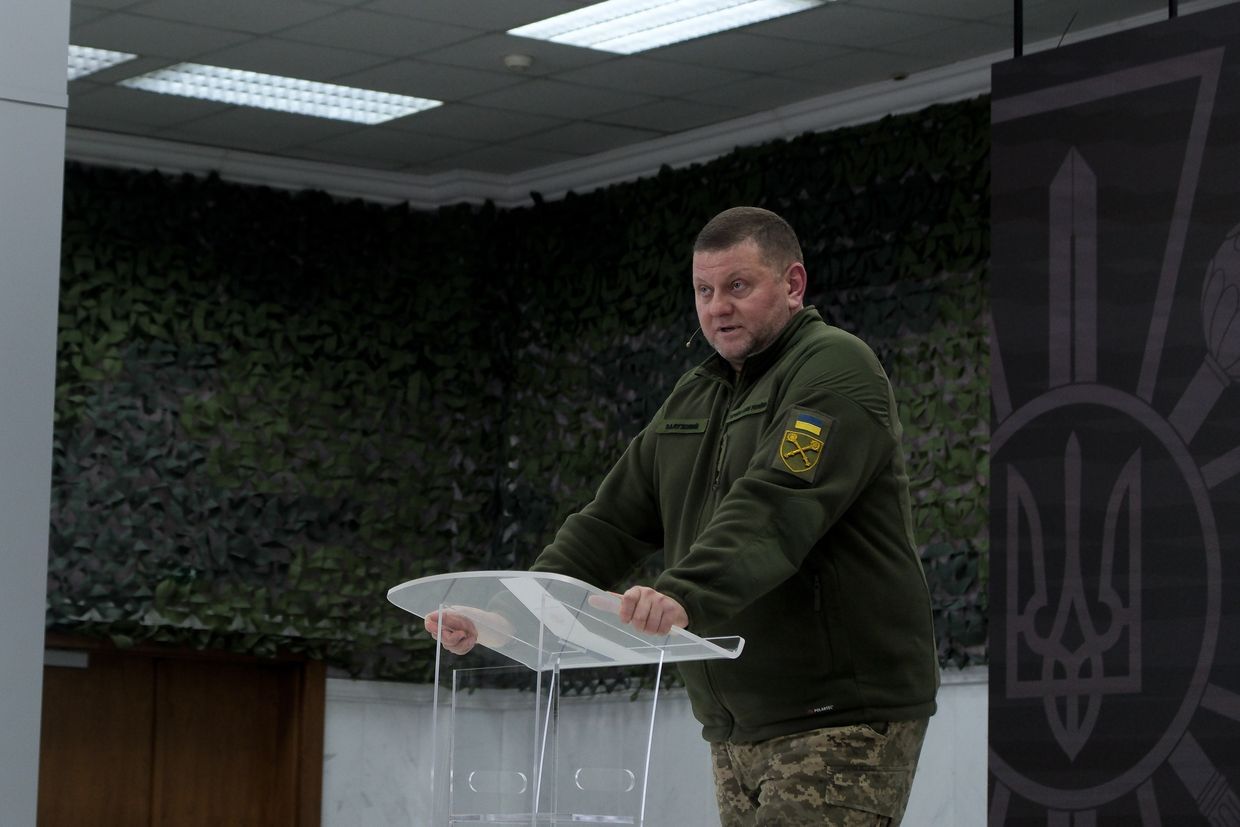
Radio relay
Outgoing and incoming artillery rages in the background as the men spend time in their dugouts between fire missions, but nothing seems to land too close.
The use of technology has made this war different from those previous in so many ways, but one that is often overlooked is how soldiers spend their free time, even in the cold, muddy world of front-line positions.
Starlink internet dishes, now a critical part of Ukraine’s field communications infrastructure, also give soldiers fast internet connection on their personal phones. With no new orders, it isn’t long before the phones come out; some make video calls to their families, some watch soap operas on speaker, but by far the most popular are TikTok and mobile strategy games.
While the mortar team gets a chance to wind down and escape from their reality, a different reality begins to play out over the radio hanging in the dugout.
“Fly, this is Courier, come in!” comes one voice on the radio.
“Courier, this is Fly, copy,” replies another, quieter and higher-pitched.
“Fly, do you have a status on the two 300s (military code for wounded)?”
“I don't know. One was wounded early in the morning, and the second only right now. He has the callsign Sanych on his helmet.”
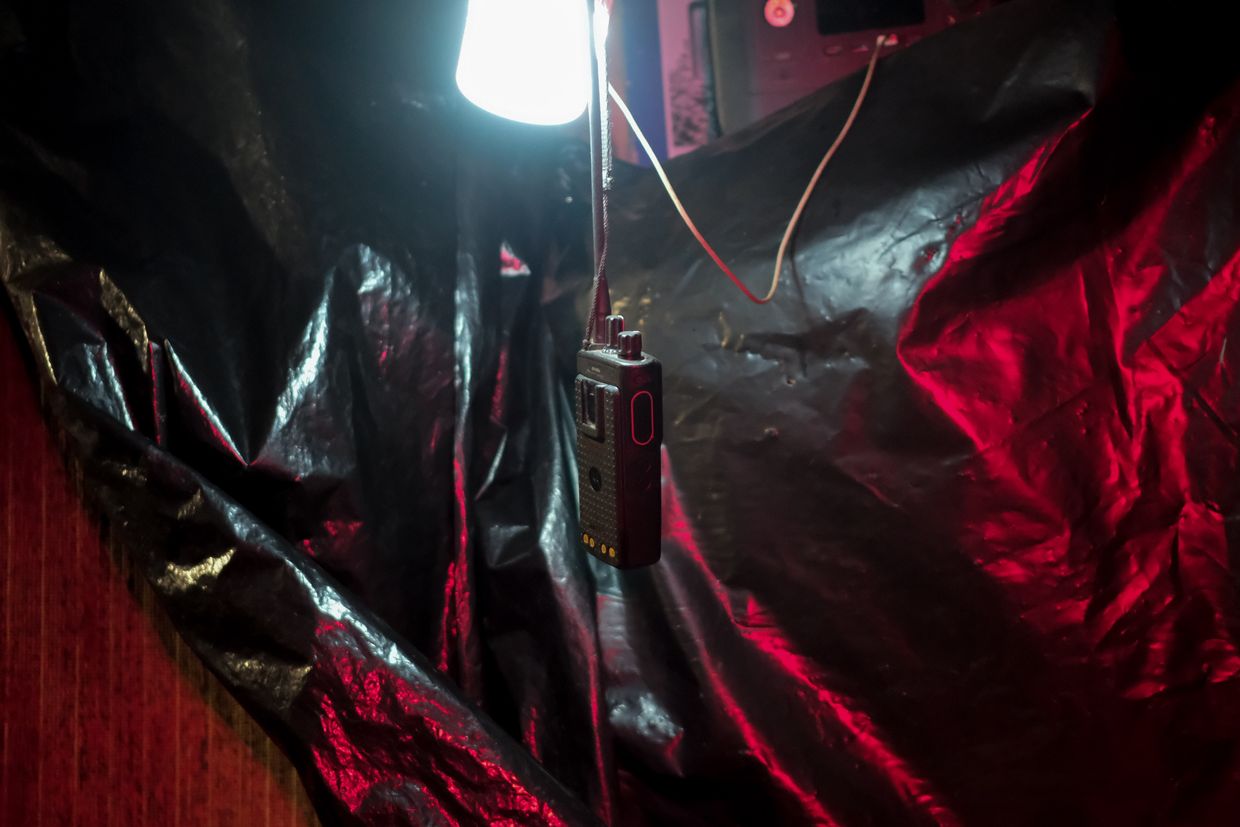
After a bit of listening, the characters, each with their own voice and callsign, begin to take shape. The soldier with the callsign Fly has been tasked by command with helping to evacuate some wounded soldiers but has been himself pinned down by enemy fire. Nobody wants to say it for sure, but the assault doesn’t seem to have been a success.
“While we went out to smoke we had two wounded, one heavily to the head, they couldn't carry him back,” Viktor comments.
His words are soon confirmed by Fly as the conversation continues.
“The one that was taken out in the morning, is he 200 (code for killed in action) now?” asks Courier.
“Plus-plus,” comes the laconic response, typically used in the military to mean a simple “yes.”
“Fly, find some cover while we figure out what to do next.”
“There is no cover here, and something is flying above, it seems to be looking right at me,” says Fly.
“It's a long evacuation and they need to go on foot,” commented Kyrylo quietly.
As dangerous as the mortar team’s work might be, it pales in comparison with that of the Ukrainian infantry assaulting and defending front-line trenches.
“It’s tougher for the infantry here, there was more cover in the forest but here they are in open fields,” said Viktor; “in winter especially there is very little place to hide.”
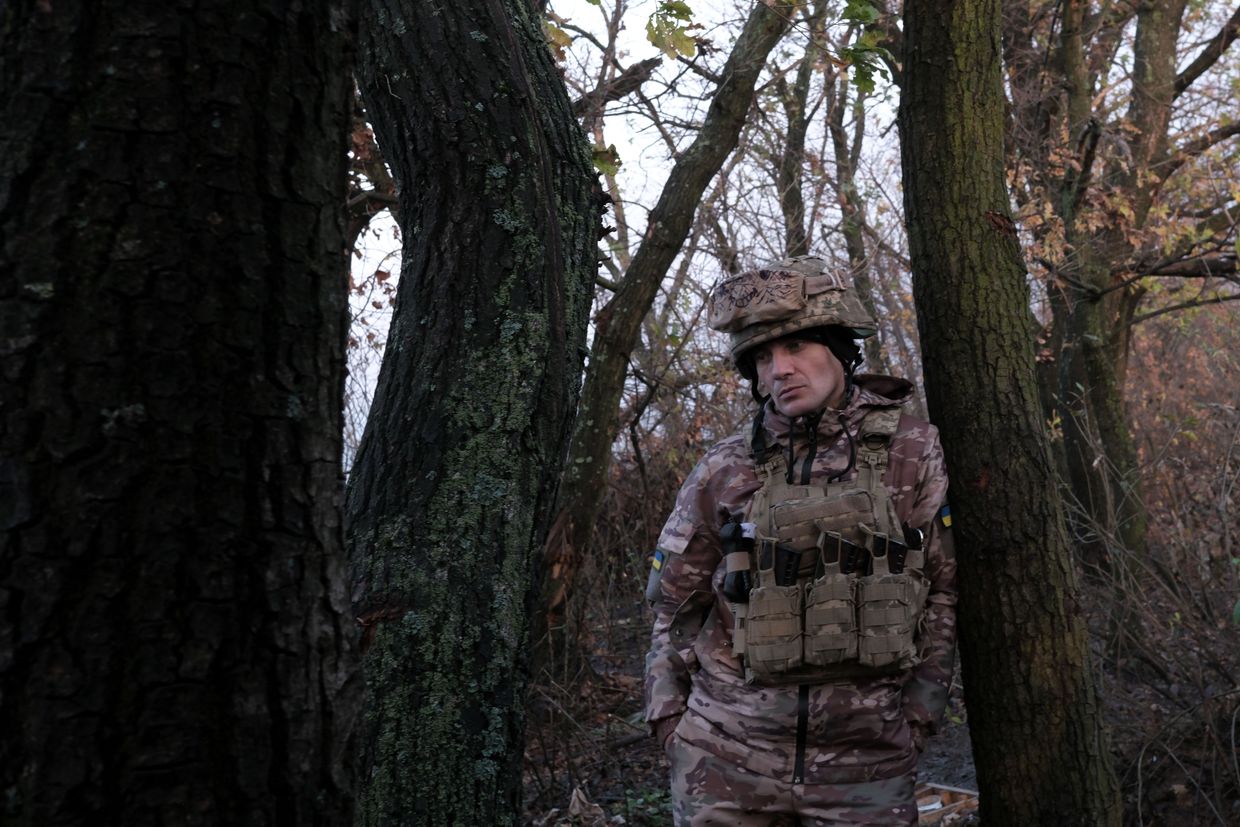
With the arrival of winter, Ukraine has been put squarely on the defensive, as Russian forces begin to make substantial gains in several key sectors of the Donetsk Oblast front line, from Bakhmut to Avdiivka and Marinka. Despite this, Viktor is adamant that localized assaults are still worth carrying out.
“Of course we need to assault and assault, to cut off their supply lines, the roads, the railways,” he said. “They can still supply their troops, but it gets harder and harder for them.”
Over the radio, Fly’s voice is getting more desperate. His mission has turned quickly from evacuating the wounded to getting out alive himself.
“They just tried to drop a grenade on me (from a drone) but it didn’t explode. I don’t want to be sitting here for much longer.”
“Hang in there Fly, we are here with you,” replied Courier.
“Plus-Plus, all good, everything will be Ukraine.”
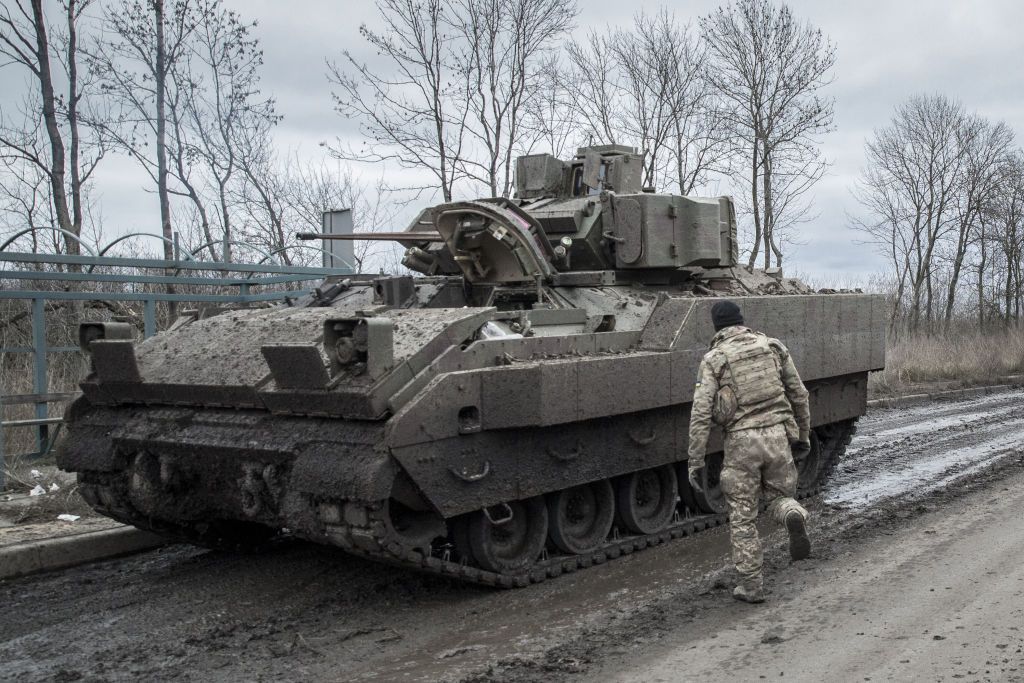
Back to work
An hour passes. The base calls Fly again and again over the radio, but he has stopped answering.
On the border of life and death, the story of a soldier like Fly could be the plot of any war movie scene, but for the mortar crew, it’s an everyday occurrence.
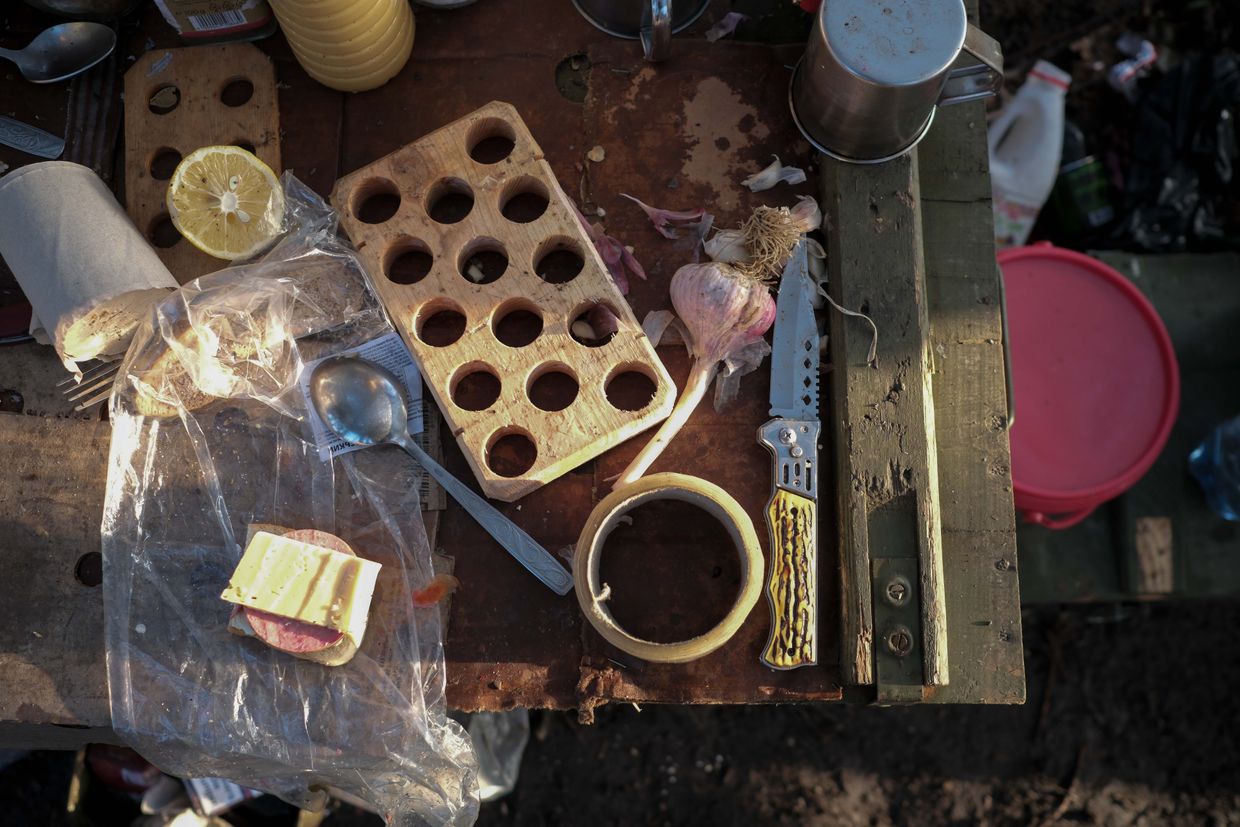

“I wasn’t really listening to it,” Viktor said laconically.
“If we paid attention to that kind of chatter we wouldn't be able to do our work,” Kyrylo added.
He turns down the volume of the radio as another fire order comes in from command via voice message on Viktor’s phone.
“To battle!” he shouts, as the men quickly put their phones away and don their helmets.
Six rounds are fired off in quick succession, every man in the team playing their own little role in what is by now a smooth, flowing process.
This time, Viktor has good news from the base. “We hit a column of vehicles,” he says to the others with a smile as the soldiers finish their work.
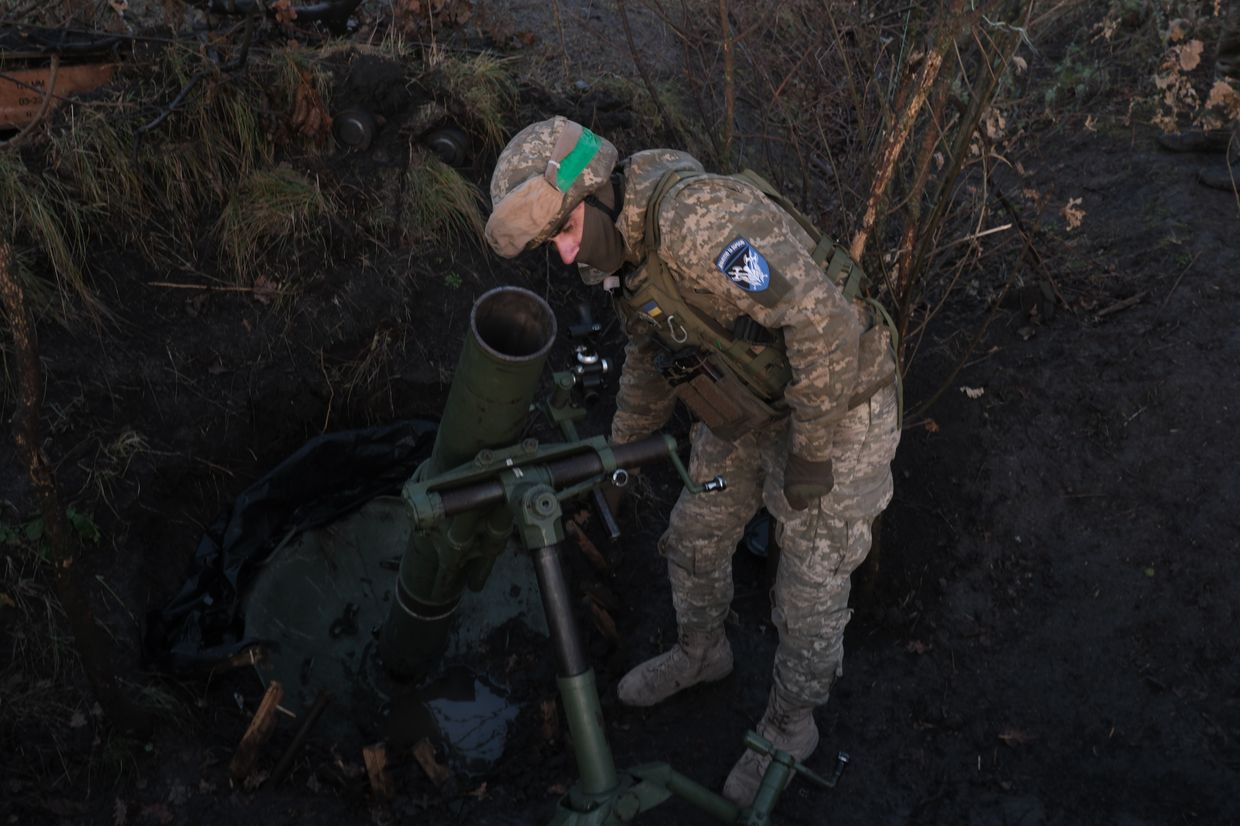
No further details for now, and still no final word on the success of the assault.
Seconds later, an enemy shell screams in, hitting about 50 meters away from one of the mortars before anyone has time to react.
Shrapnel can be heard rustling through the last brown leaves still hanging on to the young oak trees around the position, and the men take cover. The sun is retreating, and any warmth in the air with it.

Just another day
As the mortarmen once again take a rest, the background noise in the dugout is a strange mix unique to this place and time: the whir of the power station, the squeaks of the many mice, and the soldiers’ TikToks play their parts on the backdrop of the sporadic artillery fire.
The peace is once again broken by the radio, as the base tries again to contact Fly.
“Fly, Fly, this is Courier, come in.”
“Courier, this is Fly, copy.”
“He answered!!” came a jubilant, high-pitched voice from the base in the background. “Fly, all good over there?”
“Roger, I’m on my way out, all good.”
“Good to hear,” replied Courier. “Get some rest once you are out of there, we will need to work again later this evening."
“Plus-Plus.”

By the time the radio goes quiet, the sun has set on this short winter day, and soon it is time to get picked up.
As soon as the 4x4 stops on the raised roadside, the transfer is just as quick as before, water and fuel are unloaded and empty ammunition boxes are thrown on.
The drive back is quick and quiet, broken only by the crack of a shell into a ditch just after the turn west along the deserted Bakhmut highway.
At the base in the village, Sviatoslav is waiting with freshly-cooked borsch and chicken for dinner. Over the meal, he reflects on the prospect of a long war.
As much as everyone misses home, he said, his soldiers have become comfortable with their new lives, and are ready to serve as long as will be required of them.

“One of our guys, Taras from Lviv, went back home for fifteen days for the first time recently,” he said.
“In the last few days of his vacation, he was already telling me how much he couldn't wait to get back.”
The homes of Sviatoslav, Viktor, Kyrylo, and most of the others in the 42nd Brigade are far removed from the fighting here in Ukraine’s east.
For Sviatoslav, this makes their mission all the more important.
“The thought has crystallized in me over a long time,” he said, “if we don't fight here in Donbas, the war will come to us in Lviv. We are defending our homes right here.”
Note from the author:
Hi, this is Francis Farrell, thanks for coming with me on this ride. Without anything terrifying or headline-breaking, it was a more intimate look at the day-to-day trench fighting that defined 2023. We are entering a new phase of the war, which could potentially be stranger, tougher, and more uncertain than it has ever been so far. In a time when instability around the world is growing, and attention is fading when it is needed the most, please consider supporting our reporting.





